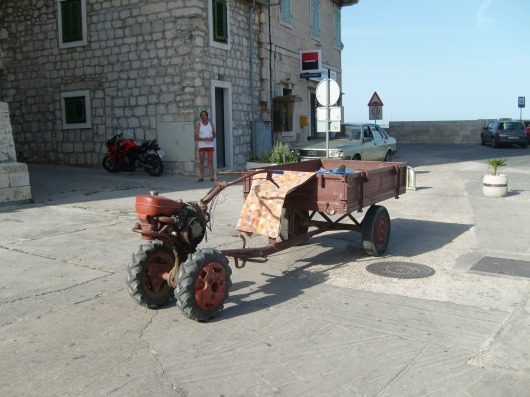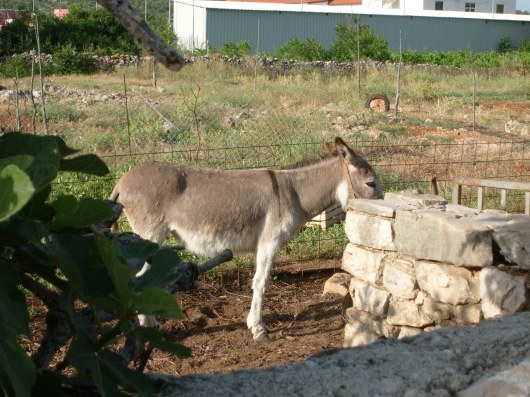Enchanted islands. That is the best way to describe them. When Terry and I left Dubrovnik to begin our week sailing the Dalmatian Coast, we expected a great trip. But we did not believe it could match the experience we had in Dubrovnik. We were wrong. We expected to see drab buildings left over from World War II followed by years of communist rule. We were wrong again. With six close friends, we boarded the gulet, “Fortuna Dalmata,” in the harbor outside Dubrovnik and set sail to visit islands, towns and villages as enchanting as their names suggest: Vis, Hvar, Krk, and Komiza.  Our crew included experienced sailors and an incredible cook. They made our island hopping experience as relaxed as it was satisfying. Our food was as good as we would expect in a first class restaurant. Not surprising, since our chef’s family owns a fine restaurant in Split. Breakfast included chocolate croissants, fruit, eggs and cereal. Dinners included veal shank and lobster. What could be better than dinner served looking out over the sea to the islands nearby.
Our crew included experienced sailors and an incredible cook. They made our island hopping experience as relaxed as it was satisfying. Our food was as good as we would expect in a first class restaurant. Not surprising, since our chef’s family owns a fine restaurant in Split. Breakfast included chocolate croissants, fruit, eggs and cereal. Dinners included veal shank and lobster. What could be better than dinner served looking out over the sea to the islands nearby.  Only 69 of the 1000 or more islands along the Croatian coast are inhabited. The entire coast has a rich history that extends back long before the birth of Christ. Various islands and towns along the coast were inhabited by–and/or did battle with–the Romans, Byzantines, Ottomans, Turks and Venetians among others. Many had ruins from those periods. The fortifications on some islands were evidence of a long history of war. The islands we visited included picturesque rural villages with basic agricultural equipment and few automobiles and taxis. Tractors were common sights.
Only 69 of the 1000 or more islands along the Croatian coast are inhabited. The entire coast has a rich history that extends back long before the birth of Christ. Various islands and towns along the coast were inhabited by–and/or did battle with–the Romans, Byzantines, Ottomans, Turks and Venetians among others. Many had ruins from those periods. The fortifications on some islands were evidence of a long history of war. The islands we visited included picturesque rural villages with basic agricultural equipment and few automobiles and taxis. Tractors were common sights.
There wasn’t an island that we didn’t want to visit longer. Many of the uninhabited islands are little more than rocky crags dotting the water between the larger islands. They cluster together like hens and chickens.
To show you even more of our favorite sites in the Croatian Islands we will post Part 2 later.









